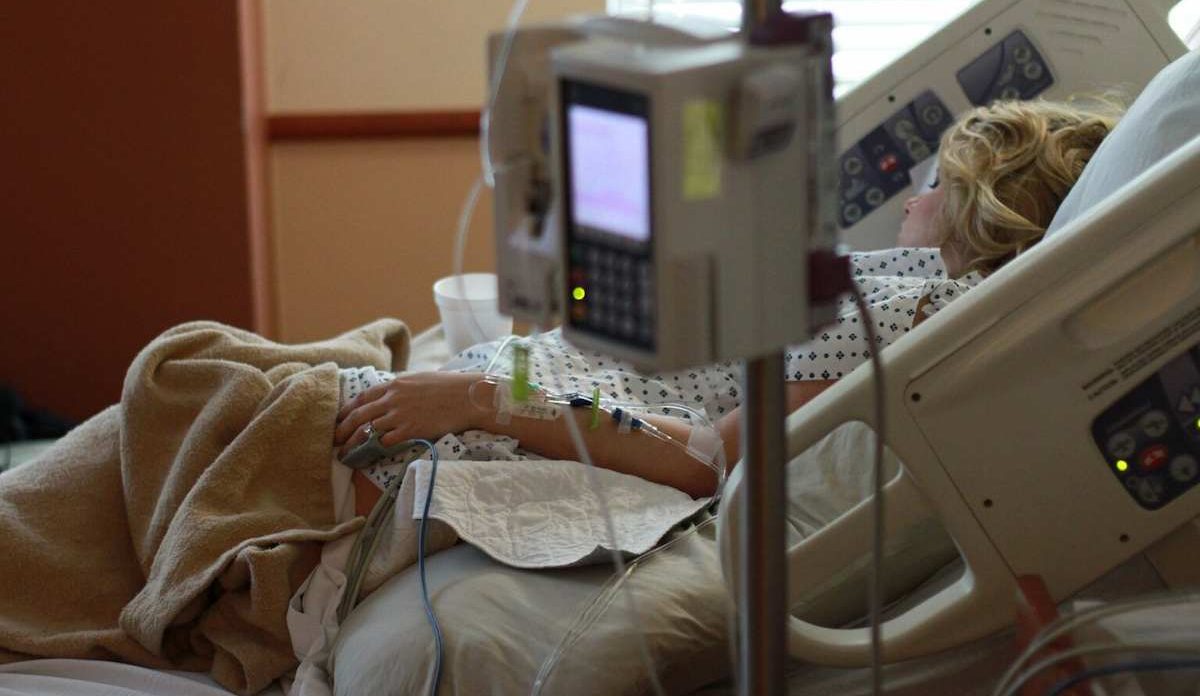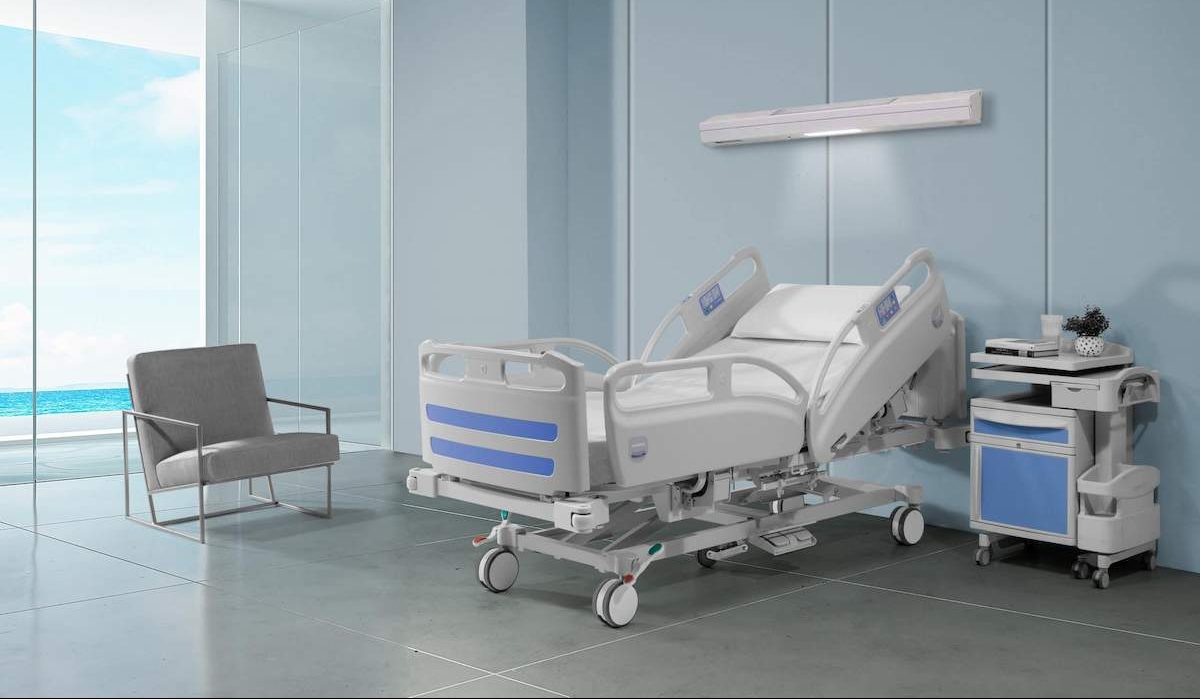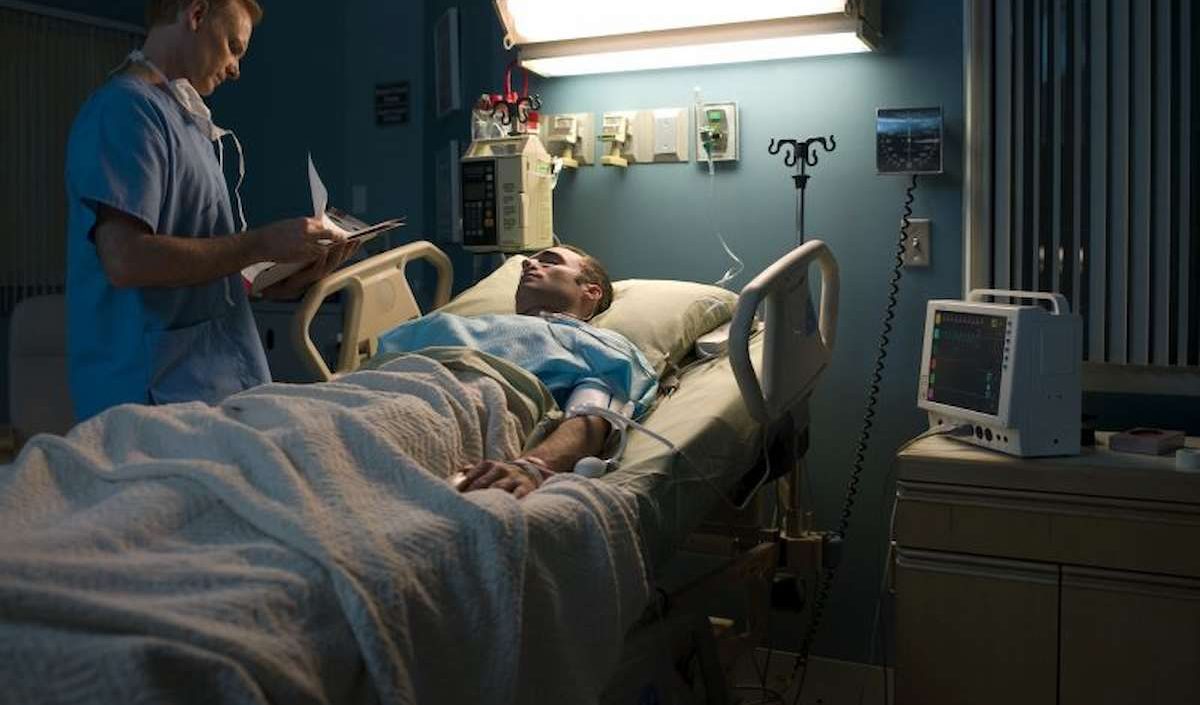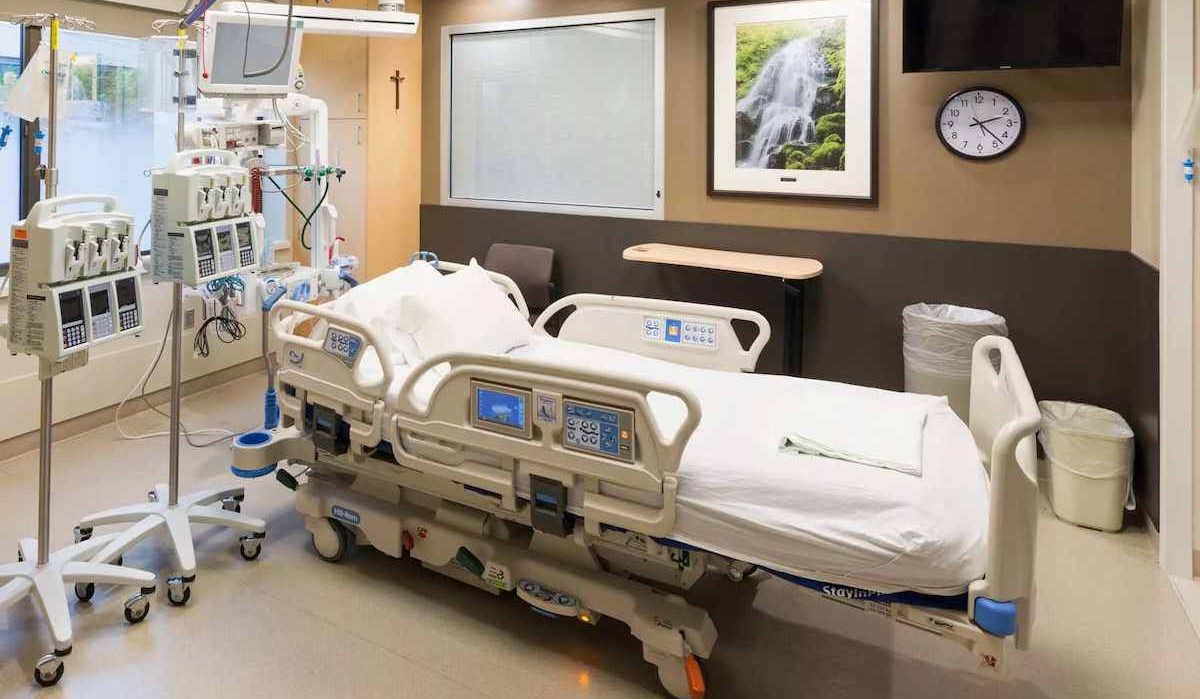In this article, firstly I tell you about icu bed properties. And then introduce some of the well-known brands in manufacturing hospital beds and ICU equipment to you. Patients in the intensive care unit (ICU) can experience various complications with prolonged immobilization and the supine position in the intensive care unit, and obese patients are increasingly a particular challenge. ICU beds share the same characteristics and several specialized ICU beds have been developed for specific patient populations, including patients at risk of developing pressure ulcers, obese patients, and patients with fractures. A standard ICU bed typically has electrical and manual controls, side rails, wheels, a brake, and a removable headrest to allow treatments (i.e., endotracheal intubation, vascular access) from the head of the bed, and an intravenous (IV) connection. ▪ Trendelenburg position: supine position with head lower than feet - often used to increase venous return to the heart in hypovolemic shock or to widen blood vessels above the heart during venous access procedures ▪ Inverted Trendelenburg position: Used in the intensive care unit to elevate the head above the heart to reduce venous return or reduce the risk of passive regurgitation in patients for whom leg flexion is contraindicated (e.g., after cannulation of the femoral artery).  ▪ Elevated Neck Support (also known as Fowler or Semi-Fowler Position): Standard nursing position in an intensive care patient when there are no contraindications - used as part of a 'package' of interventions to reduce the incidence of mechanical ventilation pneumonia to reduce the risk of passive aspiration of gastric contents : Skin ulcer caused by prolonged pressure on a sensitive area (i.e., sacrum, neck bone), usually in a bedridden patient. ▪ Rotational therapy: an approach to prevent lung complications and pressure ulcers through continuous rotation of the whole patient. ▪ Percussion therapy: an approach to prevent IC complications through continuous bedside vibration to facilitate mobilization of pulmonary secretions. ▪ Relief therapy: a variety of methods to redistribute weight away from sensitive pressure points - designed to prevent or treat pressure ulcers. Hospital beds are specially designed for patients to provide them with more comfort, convenience, and comfort during their hospital treatment. High incidence of diseases, frequent outbreaks of epidemics such as KORN and Ebola, and increased investment in healthcare facilities such as hospitals and clinics are the main factors driving the demand for hospital beds and ultimately leading to market growth. Today, major players are constantly working to improve the patient experience and bring help to healthcare professionals. For example, Hill-Rom Holdings, Inc. (US) December 2018 EarlySense continuous monitoring system for use with Hill-Rom's Centrella Smart + Bed platform for continuous monitoring of heart rate and respiratory function.
▪ Elevated Neck Support (also known as Fowler or Semi-Fowler Position): Standard nursing position in an intensive care patient when there are no contraindications - used as part of a 'package' of interventions to reduce the incidence of mechanical ventilation pneumonia to reduce the risk of passive aspiration of gastric contents : Skin ulcer caused by prolonged pressure on a sensitive area (i.e., sacrum, neck bone), usually in a bedridden patient. ▪ Rotational therapy: an approach to prevent lung complications and pressure ulcers through continuous rotation of the whole patient. ▪ Percussion therapy: an approach to prevent IC complications through continuous bedside vibration to facilitate mobilization of pulmonary secretions. ▪ Relief therapy: a variety of methods to redistribute weight away from sensitive pressure points - designed to prevent or treat pressure ulcers. Hospital beds are specially designed for patients to provide them with more comfort, convenience, and comfort during their hospital treatment. High incidence of diseases, frequent outbreaks of epidemics such as KORN and Ebola, and increased investment in healthcare facilities such as hospitals and clinics are the main factors driving the demand for hospital beds and ultimately leading to market growth. Today, major players are constantly working to improve the patient experience and bring help to healthcare professionals. For example, Hill-Rom Holdings, Inc. (US) December 2018 EarlySense continuous monitoring system for use with Hill-Rom's Centrella Smart + Bed platform for continuous monitoring of heart rate and respiratory function.  Likewise, in October 2016, Stiegelmeyer Group (Germany) introduced a new bed in the Carino dormitory, which is suitable for rehabilitation centers or psychosomatic centers, and nursing homes. In addition, much progress has been made in the development of obesity beds to improve user safety, simplify patient care for caregivers and provide tangible clinical benefits. The medical bed/hospital bed market is expected to grow at a CAGR of 7.8% from 2020 to 2027 to 5.23 billion in 2027. Stryker Company Stryker Corporation was founded in 1946 and is headquartered in Michigan, USA; Stryker Corporation and its subsidiaries operate as a medical technology company. The company is active in three business segments, namely orthopedics. medsorg. Neurosurgery and spine technology. The company supplies hospital beds as part of the MedSurg business segment. Thanks to its subsidiaries and a strong distribution network, the company is present in North America, Europe, Asia-Pacific, Latin America, the Middle East, and Africa. The company has manufacturing and distribution facilities within the MedSurg business segment in the United States - in Michigan, California, Illinois, Washington, Utah, Florida, and Texas. Outside of the United States, it has manufacturing facilities in Ireland, Germany, Mexico, Puerto Rico, Switzerland, Turkey, and the United Kingdom.
Likewise, in October 2016, Stiegelmeyer Group (Germany) introduced a new bed in the Carino dormitory, which is suitable for rehabilitation centers or psychosomatic centers, and nursing homes. In addition, much progress has been made in the development of obesity beds to improve user safety, simplify patient care for caregivers and provide tangible clinical benefits. The medical bed/hospital bed market is expected to grow at a CAGR of 7.8% from 2020 to 2027 to 5.23 billion in 2027. Stryker Company Stryker Corporation was founded in 1946 and is headquartered in Michigan, USA; Stryker Corporation and its subsidiaries operate as a medical technology company. The company is active in three business segments, namely orthopedics. medsorg. Neurosurgery and spine technology. The company supplies hospital beds as part of the MedSurg business segment. Thanks to its subsidiaries and a strong distribution network, the company is present in North America, Europe, Asia-Pacific, Latin America, the Middle East, and Africa. The company has manufacturing and distribution facilities within the MedSurg business segment in the United States - in Michigan, California, Illinois, Washington, Utah, Florida, and Texas. Outside of the United States, it has manufacturing facilities in Ireland, Germany, Mexico, Puerto Rico, Switzerland, Turkey, and the United Kingdom.  The company's principal subsidiaries are MAKO Surgical Corp. (USA), Stryker Japan KK (Japan), and Stryker (India) Unzip. HillRom Holdings Inc. Founded in 1969 and headquartered in Chicago, USA; HillRom Holdings, Inc. is a manufacturer and supplier of medical technologies and related health services. The company operates in three business segments, Patient Support Systems, Front Line Care, and Surgical Solutions. The company supplies hospital beds in the patient support systems business segment. Thanks to its subsidiaries and a strong distribution network, the company is present in various regions such as North America, Europe, Asia-Pacific, Latin America, the Middle East, and Africa. The company's principal subsidiaries are Hill-Rom (USA), Hill-Rom GmbH (Germany), and Hill-Rom Japan Co., Ltd (Japan). get AB Founded in 1904 with headquarters in Gothenburg, Sweden; Getinge AB offers products for the health and life science sector. The company operates through two business divisions, Intensive Care and Surgical Workflow.
The company's principal subsidiaries are MAKO Surgical Corp. (USA), Stryker Japan KK (Japan), and Stryker (India) Unzip. HillRom Holdings Inc. Founded in 1969 and headquartered in Chicago, USA; HillRom Holdings, Inc. is a manufacturer and supplier of medical technologies and related health services. The company operates in three business segments, Patient Support Systems, Front Line Care, and Surgical Solutions. The company supplies hospital beds in the patient support systems business segment. Thanks to its subsidiaries and a strong distribution network, the company is present in various regions such as North America, Europe, Asia-Pacific, Latin America, the Middle East, and Africa. The company's principal subsidiaries are Hill-Rom (USA), Hill-Rom GmbH (Germany), and Hill-Rom Japan Co., Ltd (Japan). get AB Founded in 1904 with headquarters in Gothenburg, Sweden; Getinge AB offers products for the health and life science sector. The company operates through two business divisions, Intensive Care and Surgical Workflow.  The company expanded its portfolio of medical beds, patient lifts, and toilet solutions with the acquisition of Arjo in Sweden in 1995. The company supplies hospital beds to the intensive care industry. Thanks to its subsidiaries and a strong distribution network, the company is present in various regions such as North America, Europe, Asia-Pacific, Latin America, the Middle East, and Africa. The company's principal subsidiaries are ArjoHuntleigh GmbH (Germany) and Getinge USA, Inc. (US), and ArjoHuntleigh International Limited (US). Invacare Founded in 1885 and headquartered in Ohio, USA; Invacare manufactures and distributes medical products for home and long-term care that promote recovery and an active lifestyle. The company manufactures and distributes products in three main product categories: mobility, sitting, lifestyle, and respiratory therapy. The company supplies hospital beds in the mobility and seating product category. Thanks to its subsidiaries and a strong distribution network, the company is present in several regions such as North America, Europe, and Asia-Pacific.
The company expanded its portfolio of medical beds, patient lifts, and toilet solutions with the acquisition of Arjo in Sweden in 1995. The company supplies hospital beds to the intensive care industry. Thanks to its subsidiaries and a strong distribution network, the company is present in various regions such as North America, Europe, Asia-Pacific, Latin America, the Middle East, and Africa. The company's principal subsidiaries are ArjoHuntleigh GmbH (Germany) and Getinge USA, Inc. (US), and ArjoHuntleigh International Limited (US). Invacare Founded in 1885 and headquartered in Ohio, USA; Invacare manufactures and distributes medical products for home and long-term care that promote recovery and an active lifestyle. The company manufactures and distributes products in three main product categories: mobility, sitting, lifestyle, and respiratory therapy. The company supplies hospital beds in the mobility and seating product category. Thanks to its subsidiaries and a strong distribution network, the company is present in several regions such as North America, Europe, and Asia-Pacific.  The company has eight production units in Europe and produces beds in Portugal and Sweden. The company's main subsidiaries are Invacare GmbH (Germany), Invacare SA (Spain), and Invacare BV (Netherlands). The main bedding collections Founded in 1982 with headquarters in Tokyo, Japan; Paramount Bed Holdings Co., Ltd. Manufactures and sells beds, mattresses, and equipment to the medical and nursing community. The company operates through the segment related to the bed business. The company and its subsidiaries provide services such as inspection and maintenance of Paramount Bed products and rental and wholesale of wellness products. Thanks to its subsidiaries and a strong distribution network, the company is present in several regions such as North America, Europe, and Asia-Pacific. The company's principal subsidiaries are Paramount Bed Co., Ltd. (Japan) and Sun network Corp. (Japan). "Detailed research, in the latest edition of HOSPITAL BED MARKET, predicts a 7.8% increase in the forecast year 2020-2027"
The company has eight production units in Europe and produces beds in Portugal and Sweden. The company's main subsidiaries are Invacare GmbH (Germany), Invacare SA (Spain), and Invacare BV (Netherlands). The main bedding collections Founded in 1982 with headquarters in Tokyo, Japan; Paramount Bed Holdings Co., Ltd. Manufactures and sells beds, mattresses, and equipment to the medical and nursing community. The company operates through the segment related to the bed business. The company and its subsidiaries provide services such as inspection and maintenance of Paramount Bed products and rental and wholesale of wellness products. Thanks to its subsidiaries and a strong distribution network, the company is present in several regions such as North America, Europe, and Asia-Pacific. The company's principal subsidiaries are Paramount Bed Co., Ltd. (Japan) and Sun network Corp. (Japan). "Detailed research, in the latest edition of HOSPITAL BED MARKET, predicts a 7.8% increase in the forecast year 2020-2027"
💰 Tenfold your income 💎
